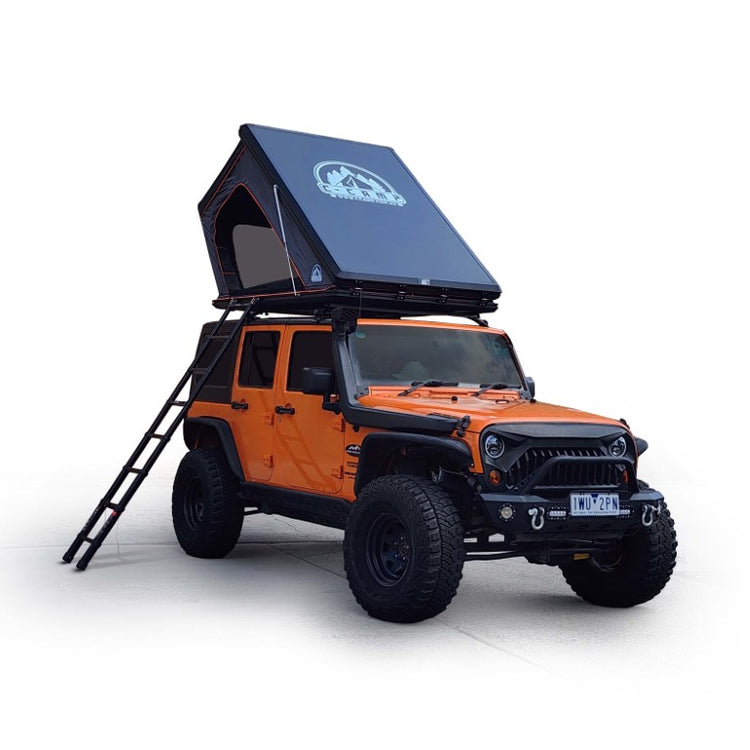How to Prevent Condensation and Mould in Your Rooftop Tent
By the CCAMP Australia Team – Real Adventures, Real Experience
If you’ve ever opened your rooftop tent after a few rainy weekends and found it a bit damp or musty, you’re not alone. Condensation and mould are two of the most common issues we encounter among campers, particularly during the cooler and wetter months in Australia. But the good news? With a few simple habits, you can keep your tent fresh, dry, and adventure-ready for years to come.
Why Condensation Happens
Condensation occurs when warm, moist air hits a cooler surface — like the inside of your tent shell or canvas. It’s perfectly normal; even just breathing inside the tent overnight can cause moisture to build up. If that trapped moisture doesn’t escape, it eventually turns into droplets, leading to damp fabric, musty smells, and mould.
Why It’s Worth Preventing Early
Once mould starts growing, it spreads quickly and is tough to remove completely. It can also weaken your fabric, affect waterproofing, and make your tent less enjoyable to sleep in. That’s why prevention is key — a little regular maintenance saves a lot of hassle down the road.
Simple Ways to Prevent Condensation and Mould
Here are some tried-and-tested tips from the CCAMP crew that work in the real world:
1. Open and Air It Out Regularly
Even if you haven’t been out camping, open your rooftop tent every week or two. Let the fresh air do its thing — unzip the doors and windows, lift the mattress if possible, and let it breathe for 30 minutes. This simple habit helps stop moisture from building up inside.
2. Never Pack Away a Damp Tent
It might be tempting to pack up quickly after a wet night, but sealing up moisture can lead to mould later. Always dry your tent before closing it — or, if you can’t, open it at home or under cover the next day to complete the drying process.
3. Store It in a Dry, Covered Spot
If you can, keep your tent under a roof — a carport or garage works perfectly. Avoid long-term exposure to humidity or morning dew. Covering it keeps dust off and also helps protect your seals, zippers, and gas struts from premature wear and tear.
4. Use an Anti-Condensation Mat
A 3D mesh anti-condensation mat under your mattress helps air circulate underneath. This small add-on makes a big difference in keeping your bedding and base dry — especially during colder nights.
5. Keep Air Moving Overnight
When sleeping in your tent, always keep at least one vent slightly open, even if it’s cold. Cross-ventilation allows humid air to escape, rather than collecting on the walls or roof. It might make the tent a touch cooler, but you’ll wake up to a much drier interior.
6. Add a Moisture Absorber When Stored
If you live near the coast or in a humid area, place a few silica gel packs or a mini dehumidifier inside the tent when not in use. They help absorb any leftover moisture and prevent mould spores from forming.
7. Clean and Check It Occasionally
Every few months, give your tent a quick once-over. Vacuum out dust and dirt, wipe down fabric and seals with mild soap and water, and let it dry thoroughly before closing. If you notice tiny black spots or mildew, clean them immediately with a mixture of white vinegar and water (1:4 ratio). Avoid harsh cleaners — they can strip away your waterproof coating.
8. Keep Bedding Dry
If you’re packing up after a trip, take the bedding out or lift the mattress slightly to allow airflow. This helps prevent trapped moisture under the foam or mattress.
CCAMP’s Takeaway
Condensation and mould are completely natural, but they don’t need to be part of your camping life. If you open and air your tent regularly, store it under cover, and make sure it’s dry before closing, you’ll never have to worry about it again. A few minutes of maintenance can save hundreds of dollars and a lot of frustration later on.
Need a Hand?
If you’ve got questions about rooftop tent maintenance or want to pick up an anti-condensation mat, get in touch with us at admin@ccamp.com.au or visit www.ccamp.com.au. Our team’s always happy to help fellow adventurers keep their setup clean, safe, and ready for the next trip.


